Synth-Aesthesia: Caught By The Fuzz (Pedal)

Arguably, the history of fuzz boxes starts in 1962, with a broken recording console in Nashville, Tennessee. Marty Robbins was recording what would become his hit song “Don’t Worry” and the channel for the bass guitar malfunctioned, resulting in a buzzing, distorted sound. Thus began the fuzz family tree.
Not that this kind of sound was new – people had been bending sounds in all kinds of ways before, from overdriving the input stage of valve amplifiers to slashing speaker cones with pens and razor blades. But unlike any of these methods, the sound of “Don’t Worry” could be reproduced with a couple of germanium transistors and the most basic circuitry fitting into a small metal enclosure. The first commercially available fuzz box was the Gibson FZ-1, over 5000 of which shipped to dealers in 1962.
This basic circuit soon found its way into the hands of electronic engineers around the world, resulting in countless variations coming up as early as 1965. Discussions of which circuit is the superior one go on to this day. Astonishing, given the small number of variables, and the fact that we’re talking about a unit which is a rather blunt tool – bludgeoning the sine wave output of an instrument into a square wave, and usually increasing the volume along the way. But don’t let rationality get in the way. There is a sonic universe of everything from violin-like singing sustain to utterly distorted chaos to explore, plus a world of invention that continues to attract a colourful bunch of sonic pioneers.
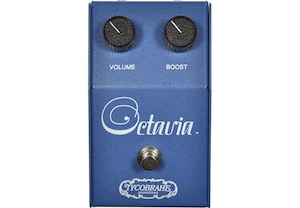
Tycobrahe Octavia
The Tycobrahe Octavia was an early example of an ‘octave-up’ fuzz unit, meaning that it takes the frequency of the input signal and doubles it. This works really well when given a clean sine wave. Anything beyond that, and especially any complex combination of notes, results in often unpredictable effects. It’s said Jimi Hendrix had his original octave-up pedal repaired in California, where Tycobrahe were building mixing desks at the time, and that they stole the circuit layout on that occasion. It’s also been said that Jimi’s pedal ran on higher voltage, sounded a lot sweeter overall and probably had its own kind of voodoo. Yet try and find an original Tycobrahe Octavia (good luck on that) or a modern day clone (Chicago Iron builds brilliant ones), and you will find the sound that defined much of early American garage rock, as well as just about any Morricone Western soundtrack worth its money.
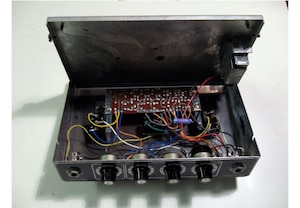
Roland AF 100 Bee Baa Fuzz
In April 1972, Ikutaro Kakehashi founded the Roland Corporation in a rented shed, with funds of $100,000 and seven employees taken along from his previous endeavour, Ace Electronic. The first Roland product was the TR77 rhythm box, but the same year also saw the first Roland effects units, including the AF100 Bee Baa Fuzz. In the history of Roland, it might not be much more than a footnote, but it is an interesting beast nonetheless. Nowhere near as confusing as fellow Japanese multi-effects units (most notably by Shin-ei who released a combined fuzz and wah pedal that also included a siren), the Bee Baa combined two different fuzz tones and a treble boost, all foot switchable. All controls are at the back, so that settings are safe when hitting the switches. The fuzz variations sound brilliant, ranging from discordant walls of sound to wiry Spaghetti Western sonics, while the treble boost is one of the most colourful boost circuits around. Roland would go on to find great success with effects sold under the Boss brand name, but the AF-100 never really took off – which might be due to the fact that for all the great sound packed into the box, Roland failed to include any visual indicators for what sound is currently selected, and what might happen when you hit one of the switches.
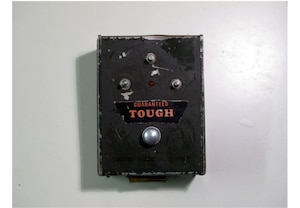
Electro Harmonix Big Muff π
Without doubt, Mike Matthews is the biggest legend in the effects business. Part hippie, part NYC hustler, part electronics wizard, he has shaped both the sound and the business of effects for more than four decades. And the Big Muff fuzz is the pedal the whole Electro Harmonix empire is built upon. Before it, production fuzzes tended to be based on germanium transistors, which are rather musical but also temperamental and prone to changing characteristics in varying temperatures and humidity. The basic design for the Big Muff came from Bell Labs inventor Robert Myer, but from there on the pedal is all Matthews. He’s the one who tuned the frequency response to achieve violin-like sustain and tone, and who came up with the marketing hype. And it was Matthews who used it to start a long-standing and widespread tradition of dubiously named effects boxes.
It is impractical bordering on unusable – and quite brilliant if that’s what you’re looking for.
Over the years, the Big Muff π has gone through lots of variations – a personal favourite is the Green Russian. By the mid-80s, Electro Harmonix had gone bankrupt twice and Matthews turned to the USSR to get back onto his feet. He correctly predicted the crumbling military industrial complex to be a gold mine for vacuum tubes, integrated circuits and cheap labour. One result of these new developments was the Green Russian Big Muff, another great inefficient fuzz box design. The huge metal casing is built like a tank, serving as a nice counterpoint to all other elements being prone to falling apart in the slightest breeze. It sounds wonderful though, with a frequency response that makes it more suitable for bass and synths than most fuzzes that came before it. And coming at a time when bland rack units still ruled most music stores, it hit the shelves as a true revelation: it looked great, was affordable and sounded louder than everything else.
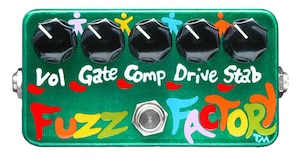
Zvex Fuzz Factory
Not long after the Russian Muffs, Zachary Vex out of Minnesota presented the Fuzz Factory. Originally only available in hand-painted enclosures, and featuring a circuit that bent the original fuzz designs of the 60s beyond recognition, this one marks the beginning of a new generation of effects and effects builders. And again, it was a simple idea that made all the difference. Most fuzz effects rely on very few components; these take careful tuning to provide reliable results and prevent the sound from turning into pure sonic anarchy. What Zvex did was leave it up to the user to control the variables of transistor bias and supply voltage through knobs on the outside. From then on, all the sounds usually avoided through good engineering became available: stuttering gated sounds, feedback that can be pitch controlled through input volume, uncontrollable squeals – it’s all in there. Zachary Vex’s own truthful description of the controls is, “Although the five knobs are named for the parameters over which they seem to have the most control, please don't hold me to it.” He goes on to advise people to write down the settings for any good sounds they achieve – yet half the fun is that whenever you are stuck with an instrument (or even a mix), you can rely on the Fuzz Factory to suggest sounds that no run of rational thoughts would lead to.

Death By Audio Soundwave Breakdown
The Fuzz Factory had a huge and lasting impact on the DIY scene. Not only did it offer sounds previously unheard of, the handpainted enclosure proudly displayed its own roots in DIY manufacturing – and the price tag was high enough to make home tinkering a tempting thought, especially since the circuitboard only holds 13 components. And while many builders hit eBay with their clones of the unit, there were enough who took this as a starting point for ever wilder ideas. Brooklyn’s Death By Audio (now also a performance space, studio and the home of A Place To Bury Strangers) started out as one such venture – and their current lineup makes the Fuzz Factory sound feeble in comparison. Their Soundwave Breakdown does exactly as it says on the tin, allowing all kinds of wave shapes to be forced upon the input signals. It also does way with the volume control, which is somewhat like building a hotrod without brakes.

Mid-Fi Electronics Random Number Generator
Another great one is the Random Number Generator by Mid-Fi Electronics: Technically, it is a fuzz pedal that stacks several fuzz circuits and allows the sound to tumble into octaves up and down, depending somewhat on input volume. It is impractical bordering on unusable – and quite brilliant if that’s what you’re looking for.
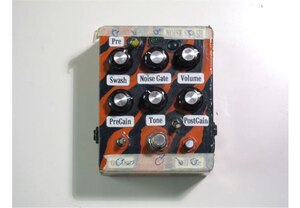
4MS Noise Swash
This one sits on the shaky borderline between highly evolved fuzz pedal and primitive synthesizer. Even without anything plugged into the input, it will generate notes that can be changed, if not controlled, through the knobs. It’s notable because it builds several walls of sounds at once (and will anger most any front-of-house engineer, or break your amplifier), but also because 4MS as a company have been at the forefront of several DIY developments for years. Early on, they built the noisiest noise pedals of them all. They included synth-like devices from the start. They’ve offered DIY kits from the get-go. And they were amongst the first to branch out into the world of Eurorack synthesizer systems, where many pedal builders now offer effects and signal generators. This has proven to be an environment where the freewheeling spirit of early synth inventors lives on, filtered through years of circuit-bending tradition and fuzz box soldering.
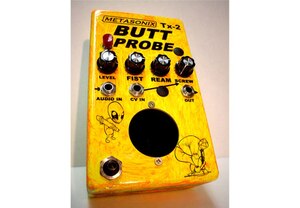
Metasonix Butt Probe
This is not to say 4MS were the first or the greatest at what they do – and this is not a competition. Though, if it was, all kinds of awards would need to go to Metasonix. Based on vacuum tubes, their designs take everything to unknown extremes. Their fuzz box was called the Butt Probe (with controls including ‘Fist’ and ‘Ream’), with the expressed purpose of screwing any signal fed into its input. It is currently out of production, but it’s said that the current multi-effect KV-100 Assblaster will take up a similar purpose. It is one of the most amusing, most expensive and most surreal ways of making any instrument sound like, well, ass. As such, it might well be the ultimate fuzz-like effect out there. It’s also probably, after all these years, one piece of gear that will still get you kicked out of any Nashville recording sessions.
Jan Niklas Jansen is an editor at RBMA Radio. In his free time he plays guitar with Locas In Love and co-runs Bear Cave studio in Cologne, Germany.

